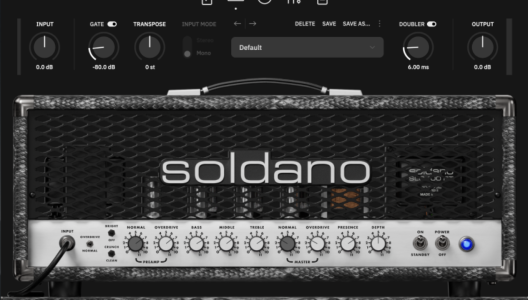laxu
Rock Star
- Messages
- 8,370
Reading this...I just have to say Tore Magnusen is just so full of shit.Long ass interview here: https://www.musicradar.com/news/how...lling-amp-pedal-concept-and-won-the-edge-over
"I always felt that it was kind of weird that if I go to a Tweed Deluxe emulation product from somebody, for example, and it has like a bass, middle and treble controls. I know Tweed Deluxes and that's not on my Tweed Deluxe. It might be nice to have a Tweed Deluxe that did that, but that's not where I came from.
"I like to know that whatever I do and however I turn the knob I can sort of expect the same thing that I would get from the real product. And that's one of the real benefits of having one pedal do one thing – you can emulate the product down to a tee and not add or miss stuff that would have been in the original product or the original amp."
A digital pedal doesn't become more complicated if you add a limited set of extra options. People using a Strymon Iridium with 3 amp models aren't going to have any worse time than people using a UA pedal with only one.
People who want a mid knob on a Deluxe Reverb or Tweed amp can just leave it at a particular setting to keep it "authentic" and everything else is additional functionality to fine tune it to your liking. There no justification for e.g UA Ruby's treble and bass controls functioning in exactly one of its three channels. That's stupid on a digital pedal that is not limited by a real amp circuit.
"So there's a certain point when you have a product without a screen on it. There would be no problem for us to basically have a row of LEDs and you get seven segments and say, you get 100 presets. But there's no way to tell what setting you're on. And I find that at some point, it just gets too confusing.
Whereas if you have two sounds that you can switch between and you know what they are that's, at least to me, that's very reassuring. I'm not stepping through preset number nine and then have no idea whether it's one thing or another."
Except it makes no difference if there's 1 preset to switch to vs 128 presets. You won't know what the settings are on preset 1 any more than you will know what they are on preset 9. If remembering presets is an issue - maybe you have too many of them?
While I agree visibility to presets is a legitimate issue on many pedals with presets but no displays/LEDs, it's still better than the alternative of no presets or a single one. Especially on multiple fx type pedals like the UA Astra modulation.
People who don't use MIDI have the same experience as if it doesn't exist. People who want to use MIDI to get extra functionality, or simply switching convenience, can then use those more advanced features as they please. I don't use all the capabilities of my MIDI controllable pedals, but I appreciate they are there if my needs change in the future.
Regarding the lack of headphone out:
"The other part is also just the fact that the platform is not really born with that and it would be really, really hard for us to fit it in there without making it quite a bit bigger. And also quite a bit more expensive. Which at the end of the day would get back to the to the customers in terms of how much the product would cost."
Yet many more compact digital modelers manage to do that just fine without making them significantly more expensive. UA just doesn't want to redesign anything.
James Santiago is way more honest about it:
"So I do feel that when someone's like, 'Oh, man, I have to use this other thing in my hotel room'. It's like, 'Dude, I'm bummed for you too. But here's 25 bucks. Let's go to Amazon and order you a little headphone amp'. And that's a terrible thing to say out loud. I'm sorry."
I'm ok hearing that. "We just decided not to include one" is an ok reason, and even something like the Strymon Iridium does sound better connected to a proper audio interface compared to using its headphone jack.
Tore talks about "keeping it simple" many times in the article, but what is simple about:
- Requiring account registration, internet connection and a mobile app to adjust secondary features on a pedal, with no fallback methods.
- Requiring both a computer app to update firmware and a mobile app to adjust settings.
- Requiring a mobile app to switch between multiple presets.
- Secret settings on those mobile app only presets that the end user cannot access.


